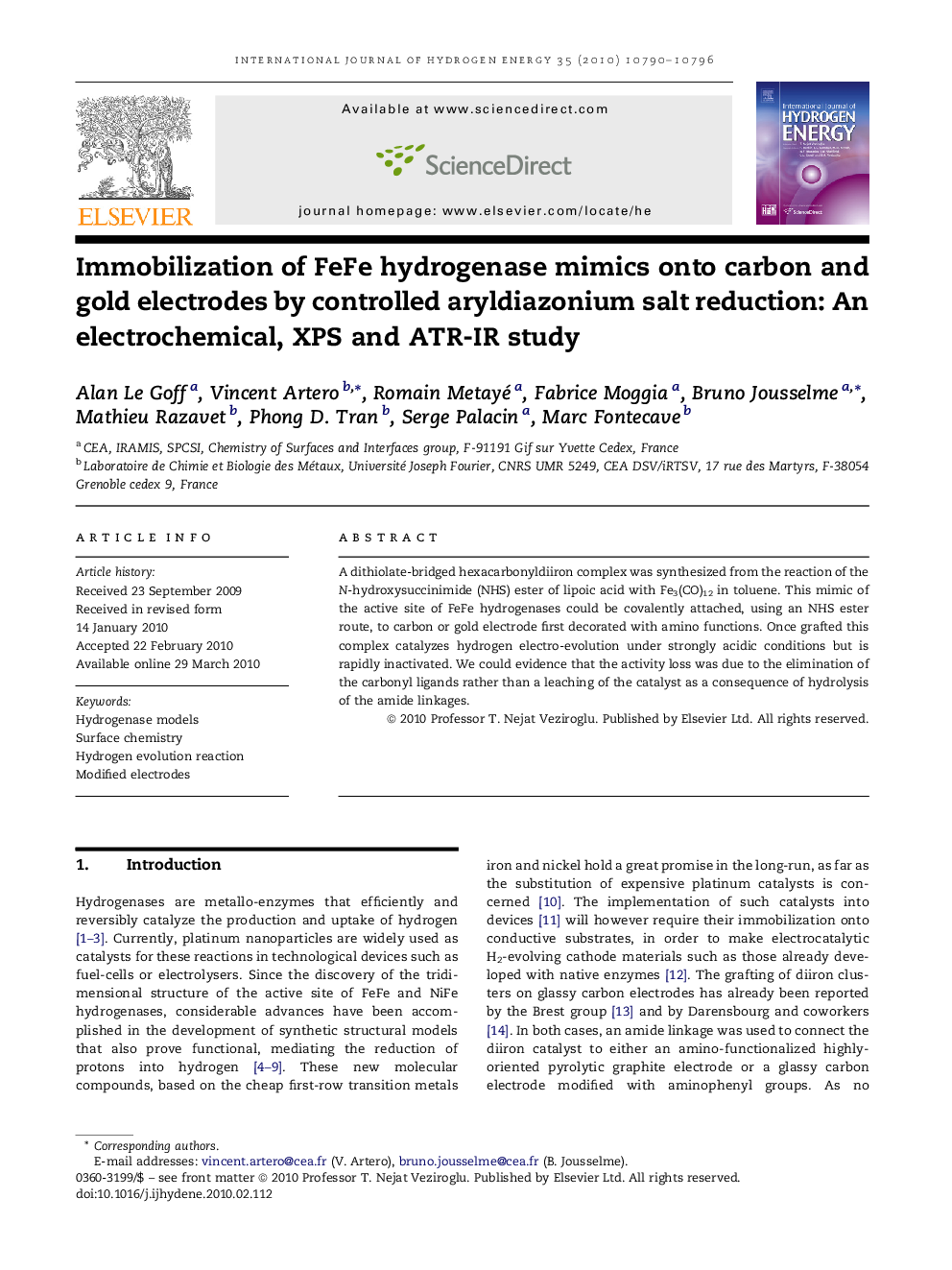| Article ID | Journal | Published Year | Pages | File Type |
|---|---|---|---|---|
| 1280149 | International Journal of Hydrogen Energy | 2010 | 7 Pages |
Abstract
A dithiolate-bridged hexacarbonyldiiron complex was synthesized from the reaction of the N-hydroxysuccinimide (NHS) ester of lipoic acid with Fe3(CO)12 in toluene. This mimic of the active site of FeFe hydrogenases could be covalently attached, using an NHS ester route, to carbon or gold electrode first decorated with amino functions. Once grafted this complex catalyzes hydrogen electro-evolution under strongly acidic conditions but is rapidly inactivated. We could evidence that the activity loss was due to the elimination of the carbonyl ligands rather than a leaching of the catalyst as a consequence of hydrolysis of the amide linkages.
Related Topics
Physical Sciences and Engineering
Chemistry
Electrochemistry
Authors
Alan Le Goff, Vincent Artero, Romain Metayé, Fabrice Moggia, Bruno Jousselme, Mathieu Razavet, Phong D. Tran, Serge Palacin, Marc Fontecave,
